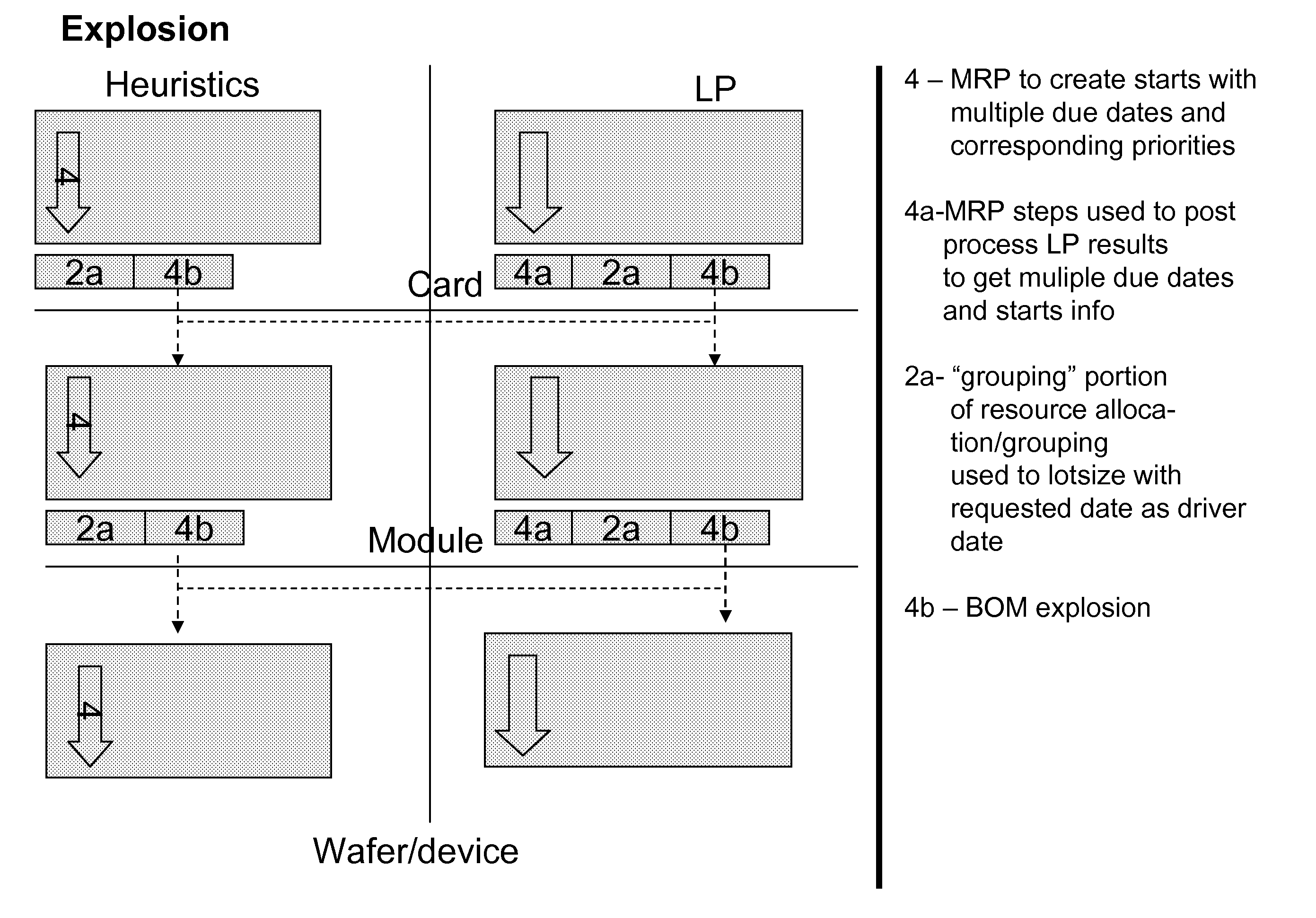Large scale supply planning
a technology of large-scale supply planning and planning, applied in the field of computer implementable decision support systems, can solve problems such as the allocation of material and capacity assets to meet the end customer demand
- Summary
- Abstract
- Description
- Claims
- Application Information
AI Technical Summary
Benefits of technology
Problems solved by technology
Method used
Image
Examples
Embodiment Construction
[0037] Supply chain planning involves the allocation of limited resources such as material inventories and capacities to best satisfy a prioritized demand statement. Competing needs for resources can be prioritized. However, the business priorities associated with a need can change as a function of when the need is satisfied. For example, FIG. 1 illustrates a demand for 100 pieces which has a requested delivery date of August 8th and a committed delivery date of August 25th. In this example, previously the business committed to deliver the 100 pieces to the customer by August 25th and presently the customer is requesting the pieces be delivered by August 8th. Because it is more important for the business to honor its previous commitment, the demand's commit date is assigned a more important priority (demand class 1) than the demand's request date (demand class 6). In general, a need may not be particularly important at the moment but may become critically important if the need is no...
PUM
 Login to View More
Login to View More Abstract
Description
Claims
Application Information
 Login to View More
Login to View More - R&D
- Intellectual Property
- Life Sciences
- Materials
- Tech Scout
- Unparalleled Data Quality
- Higher Quality Content
- 60% Fewer Hallucinations
Browse by: Latest US Patents, China's latest patents, Technical Efficacy Thesaurus, Application Domain, Technology Topic, Popular Technical Reports.
© 2025 PatSnap. All rights reserved.Legal|Privacy policy|Modern Slavery Act Transparency Statement|Sitemap|About US| Contact US: help@patsnap.com



